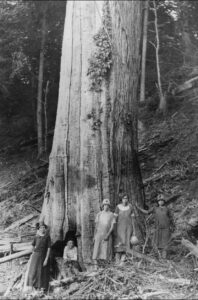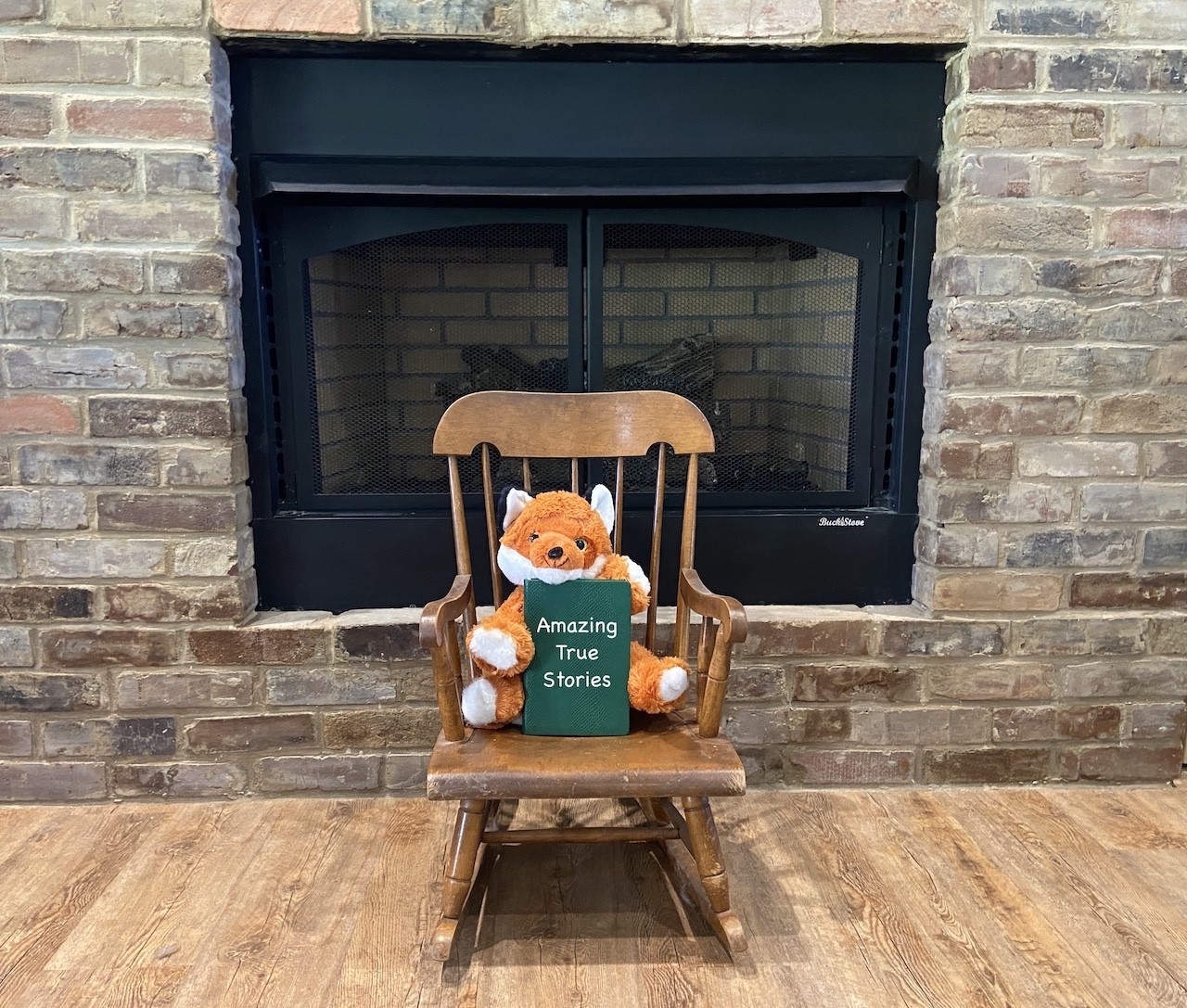“Under the spreading chestnut-tree
The village smithy stands;
The smith, a mighty man was is he,
With large and sinewy hands;
And the muscles of his brawny arms
Are strong as iron bands.”
This is the first stanza of the classic poem, The Village Blacksmith, by Henry Wadsworth Longfellow. It is special to me since I have only heard this first stanza as my husband has recited it for the last 49 years, because he learned it in the seventh grade and has never forgotten it, even now.
I thought of it this week, when I came across a fascinating historical piece from the Appalachian Americans on the chestnut tree (I mean Knox the Fox came across the article.)

Circa 1920: Family of James and Caroline Shelton pose by a large dead chestnut tree in the Great Smoky Mountains
(Photo from the Great Smoky Mountains National Park)
Prior to 1900, one in every four hardwoods in the Appalachian Mountains was the American chestnut tree. It could grow rapidly, reach huge sizes and was used wherever strength and rot-resistance wood was needed for cabins, rail fences, furniture and shingles that lasted three generations.
People ate its fruit, raw, boiled and baked. Chestnut ripening coincided with the Thanksgiving-Christmas holiday season, and we remember the song by Mel Torme, Chestnuts Roasting on an Open Fire.
Sadly, by 1950, a blight had destroyed the inner bark of the tree with nothing found to stop the disease from spreading from one mountainside to the other. The nearly four-billion-strong American chestnut population in North America was devastated. However, due to the chestnut rot resistance, logging of standing dead trees and then of the fallen logs took place for decades after the chestnut trees were killed.
Presently the Carolinas chapter of The American Chestnut Foundation is at work year-round planting, watering, weeding, pollinating, collecting, protecting, researching and traveling across the region to return the tree to its former glory. For more information, visit its website at American Chestnut Foundation
All of us have a story and I want to tell yours! Send them to susan@knoxtntoday.com

